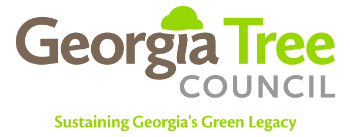INVASIVE PLANTS
Overview
Invasive plants of Southern Forests have gained a substantial foot hold over the last 100 years. Invasive species is defined as species that are not native to a given ecosystem and whose introduction to that ecosystem causes or is likely to cause economic or environmental harm to human health. Note that not all invasives are from regions outside of Georgia. For example, the Southern Magnolia is native to South Georgia but not North Georgia. Interestingly, invasives typically go through a lag period lasting up to 50 years before they break out, which means many plants introduced in our past might become invasive in the future. It is probable that invasive species are here to stay, but that does not mean that we cannot protect certain designated areas to be bioreserves without invasives that will support native habitat, species, and appearances.
Lessons from the field
To minimize impact on wildlife, it is recommended to remove an area of invasives over several years. Typically the invasives have taken many years to be established, so do not be in a rush to remove in one swoop. Timing is also important. The best time to spray english ivy is in July-August, while the ivy is still growing and you are safe from damaging spring perennials. Winter is a great time to remove many invasives like privet because it is evergreen and allows you to more easily visualize what needs to be removed. Winter also has the advantage of minimizing your impact on birds using the privet for shelter. Privet can be removed by the roots or cut near the ground and immediately sprayed. The cut/spray tactic does not work as well in the winter since the privet is semi-dormant and does not effectively absorb the poison.
Resources
Non-native Invasive Plants of Southern Forests, A Field Guide for Identification and Control. James Miller, 2003
Published book meant to provide you with traits for positive identification of 33 most serious invasive plants in the Southern Region. The Southern Research Station supports wide distribution of this publication. You can request a box of 40 copies via email (pubrequest@srs.fs.usda.gov). This book can also be viewed at:
http://www.srs.fs.usda.gov/pubs/viewpub.jsp?index=5424
http://www.srs.fs.usda.gov/fia/manual/exotic_pest_plants.htm
http://www.invasive.org/eastern/srs/ in HTML format.A set of powerpoint presentations that can be used for instruction available for download can be found at:
http://www.invasive.org/weeds/ppt/program.html
Georgia Exotic Pest Control Council
This one-stop website has it all, including maps of the invasives by county and up to date presentations by those that know the most: http://www.gaeppc.org/ The purpose of the Georgia EPPC is to focus attention on:
» the adverse effects exotic pest plants have on the diversity of Georgia’s native plants and animals;
» the use of exotic pest plant management to prevent habitat loss;
» the socioeconomic impacts of these plants;
» changes in the seriousness of the different exotic pest plants over time
» the need to exchange information which helps land owners and managers set priorities for exotic pest plant management.
Comprehensive List of Invasives
A comprehensive list of plants that are considered invasive in the southern region can viewed at:
http://www.invasive.org/seweeds.cfm
Why are we removing ivy?
English Ivy is particularly invasive and has escaped many backyards. Reasons and methods for removal are nicely summarized at: http://www.theardens.com/weedEnglishIvy.htm
Georgia Native Plant Society
For a comprehensive site on what to plant and how to identify native plants, this is the place.
